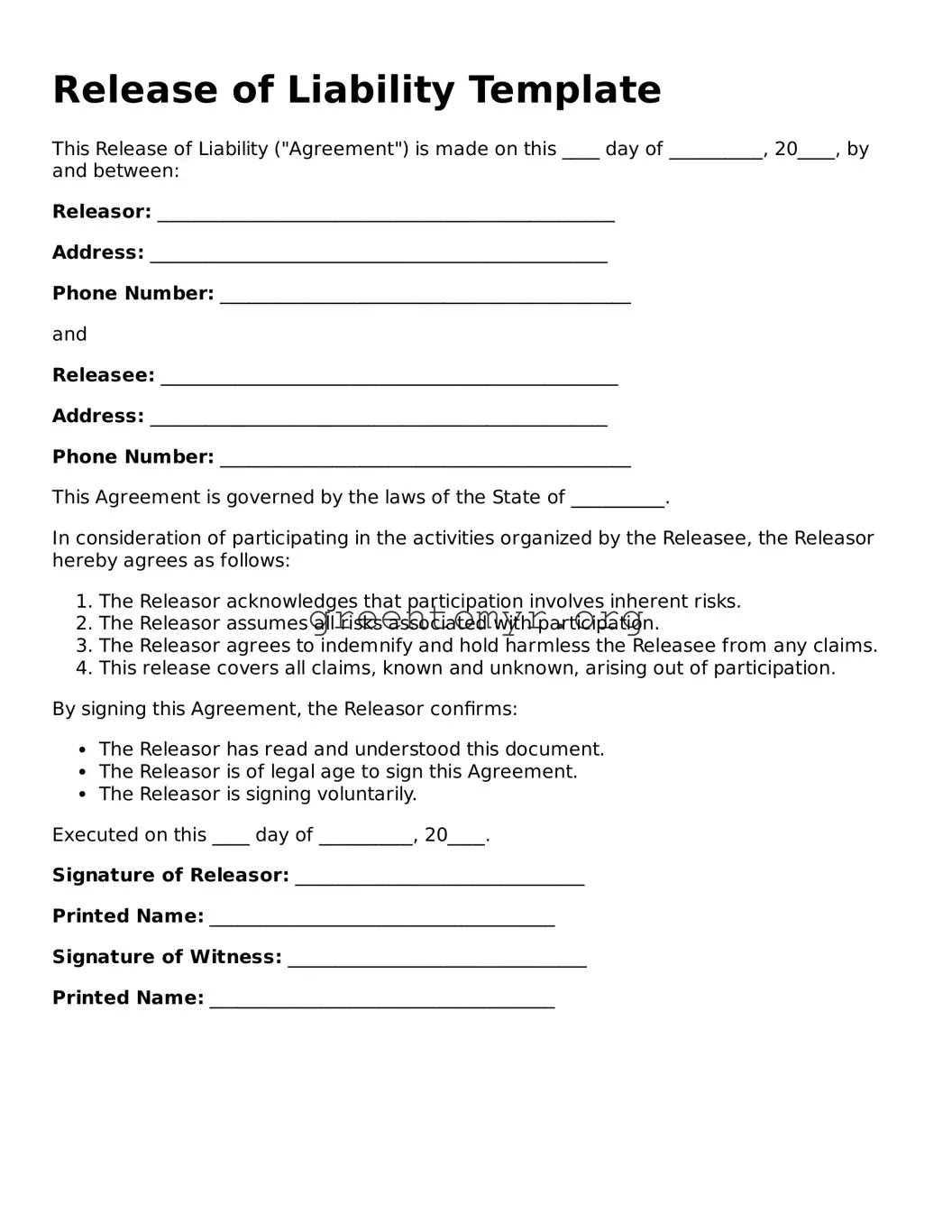Release of Liability Template
This Release of Liability ("Agreement") is made on this ____ day of __________, 20____, by and between:
Releasor: _________________________________________________
Address: _________________________________________________
Phone Number: ____________________________________________
and
Releasee: _________________________________________________
Address: _________________________________________________
Phone Number: ____________________________________________
This Agreement is governed by the laws of the State of __________.
In consideration of participating in the activities organized by the Releasee, the Releasor hereby agrees as follows:
- The Releasor acknowledges that participation involves inherent risks.
- The Releasor assumes all risks associated with participation.
- The Releasor agrees to indemnify and hold harmless the Releasee from any claims.
- This release covers all claims, known and unknown, arising out of participation.
By signing this Agreement, the Releasor confirms:
- The Releasor has read and understood this document.
- The Releasor is of legal age to sign this Agreement.
- The Releasor is signing voluntarily.
Executed on this ____ day of __________, 20____.
Signature of Releasor: _______________________________
Printed Name: _____________________________________
Signature of Witness: ________________________________
Printed Name: _____________________________________
